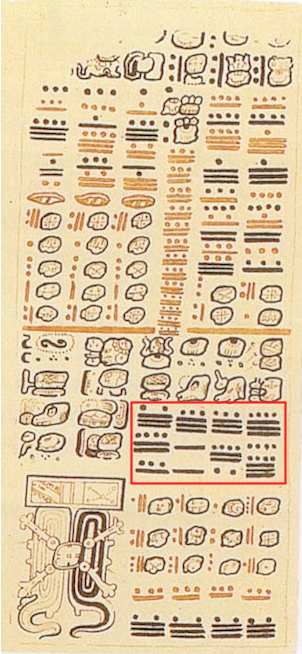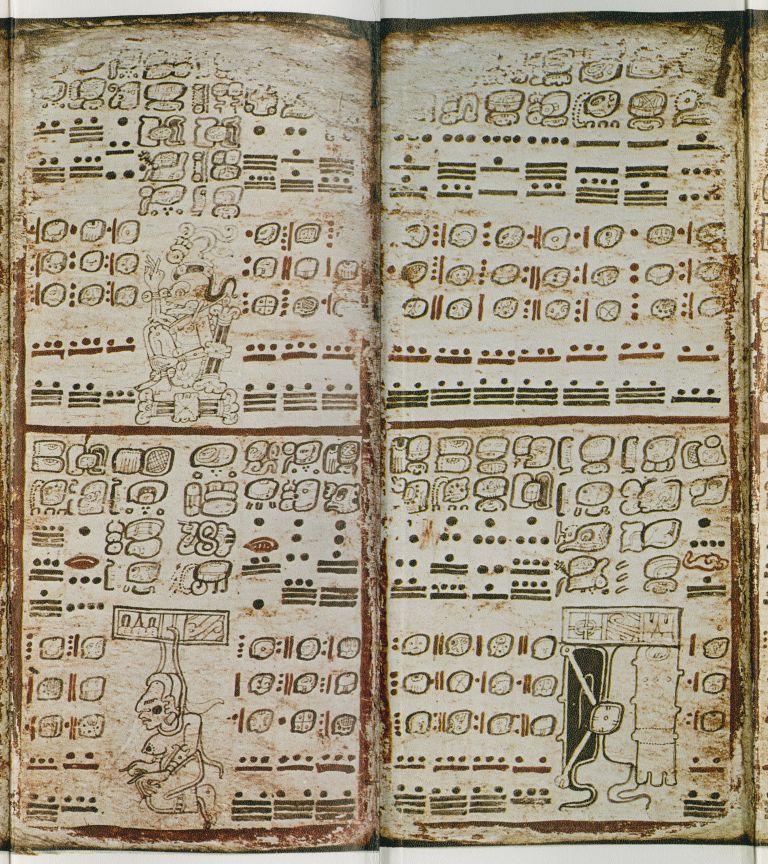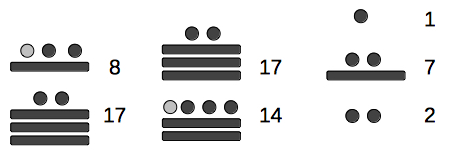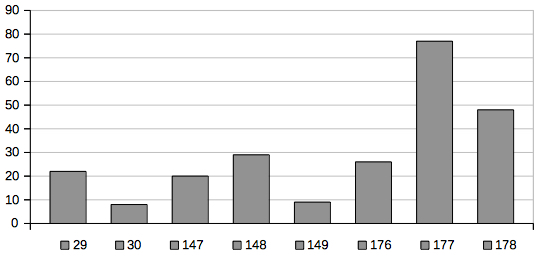The Dresden Maya Codex
|
The Dresden Maya Codex from
about 1200 to 1250 is one of the very few
written documents of the pre-Columbian Maya
culture that have survived to the present day.
It contains 3 astronomical tables:
On page 52 we find the numbers (red frame): 17.14.8 = 6408
18.5.5 = 6585 18.14.2 = 6762 19.4.19 = 6938 The difference of subsequent numbers is 177, wich is the duration of 6 lunations of 29.5 days (synodic period of the Moon from New Moon to New Moon).  Wikipedia  http://uknowledge.uky.edu/world_mexico_codices/2/ On the left page (53) in
the upper left part we find 177 = 8.17,
the multiple 2·177 = 354 = 17.14, and 502
= 1.7.2, which is the sum of 354 and 148,
148 beeing about 5 lunations (148 ≈ 147.5
= 5·29.5):
 and, at the right of the
glyphs:
1.15.14 = 679 = 502 + 177,2.6.16 = 856 = 679+177, 2.15.13 = 1033 = 856+177 From 1001 to 1099 the are
239 solar eclipses.
The frequency of the intervals (rounded
days) between subsequent solar eclipses
is:
 A solar eclipse occurs
when the passage of the Moon through a
node coincides with the new moon within ±
17° 25' of a lunar
node. As the Sun moves about 1° per day,
an eclipse at e.g. -13° and +17° with an
interval of 30 days is possible, or at
+17° and -13° with an interval of
178-30=148 days or 177-30=147 days.
|
Updated: 2015, Feb 14